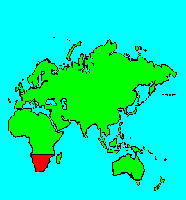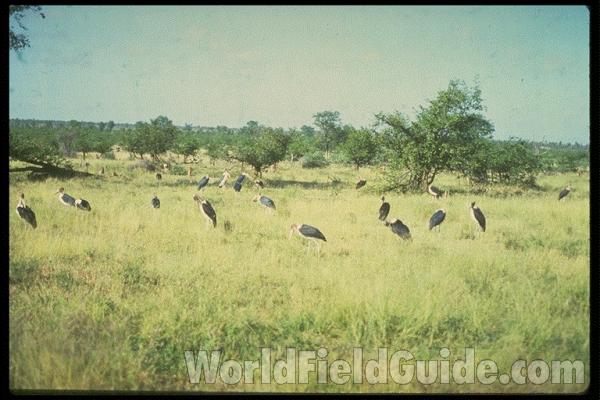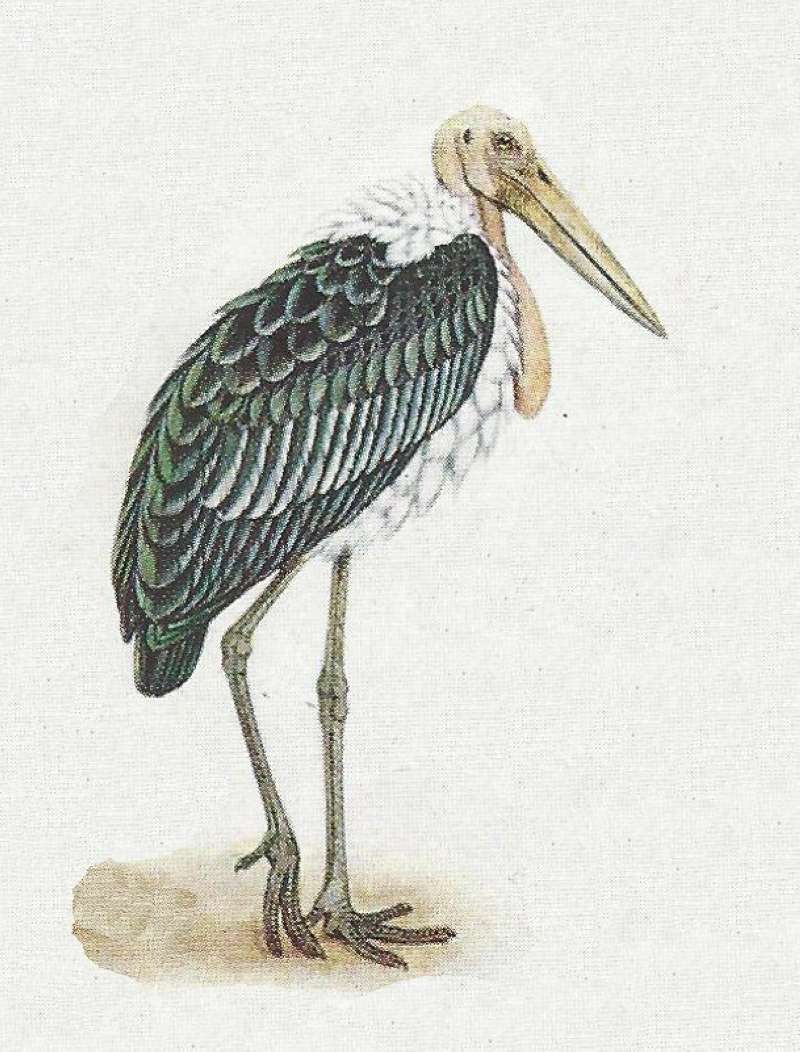SPECIES INFO
African Marabou Stork (Leptoptilos crumeniferus) is found on both sides of the equator in tropical Africa. A white breast, dark back and wings, and a reddish head help identify this gigantic stork, which can be up to sixty inches tall. The large air sack that hangs from the bird's neck may be as large as its large bill.
There are no subspecies.
As of l992, although this species was listed in CITES for Ghana, it was not considered endangered throughout its range.The stork genus Leptoptilos contains three species of Old World storks. One species is African and the other two are found in southern and southeastern Asia. Two species are very large standing about 5 feet tall. Sometimes these birds show a large throat pouch.
An older encyclopedia notes that the older Indian name was Argala, and that name previously also appeared as the genus.
Stork group (Family Ciconiidae) contains 17 species of storks.
Stork and Heron group (Order Ciconiiformes) is made up of birds with long legs that usually are found near the shores of bodies of water. Their long legs let them wade through the shallow water looking for food. Fossil remains indicate these birds have been around for at least 100 million years. There are about 114 living species in this group.
Aves contains about 8,650 different species of living birds known to science. Each year about one new species is discovered in some remote rain forest or remote island. In addition, scientists have been raising many subspecies to full species status which may raise the species count to 10,000. Birdlife recognizes 10,027 species as of 2011.
However, each year about one species goes extinct. The rate of extinction is increasing, and the rate of new discovery is decreasing, so that the number of bird species will soon begin to decline rapidly. Although different taxonomists would organize the birds differently, there are approximately twenty-seven orders of birds. These orders are broken down into about one hundred and fifty-five different families.
Recent research of the genetic structure of some of the shore birds and owls would indicate that the present organization of orders and families should have some modification.
The birds are a worldwide group of animals that are characterized by having the front limbs modified into wings that are used for flying. Perhaps the most unique feature of the birds is the feathers. These feathers are made up of a central support called a quill and a series of small filaments that are hooked together as barbs.
For many years it was believed that Archaeopteryx discovered in Bavaria was the oldest bird from about 150 million years ago. However, in l986, Sankar Chattterjee, a Texas paleontologist, reportedly discovered a bird in the genus Protoavis that lived about 225 million years ago.
When this project was begun in 1978, we used Austin & Singer for bird taxonomy. Since then, we have adopted many changes, but have kept some older concepts that are still found widely in the literature. Recently, we have used Clements and Howard & Moore. Very recently, we have used Monroe and Sibley for the higher taxonomy of the perching birds.
Backboned Animals (Phylum Chordata) are the most advanced group of animals on earth. These animals are characterized by having a spinal cord or backbone. Most members have a clearly defined brain that controls the organism through a spinal cord. Fish, amphibians, reptiles, birds, and mammals are in this phylum.
Currently, some taxonomists believe that the fish should be divided into two groups (sharks and regular fishes) and that there are some other primitive groups in the phylum such as hagfish or lampreys.
Animal Kingdom contains numerous organisms that feed on other animals or plants. Included in the animal kingdom are the lower marine invertebrates such as sponges and corals, the jointed legged animals such as insects and spiders, and the backboned animals such as fish, amphibians, reptiles, birds, and mammals.





